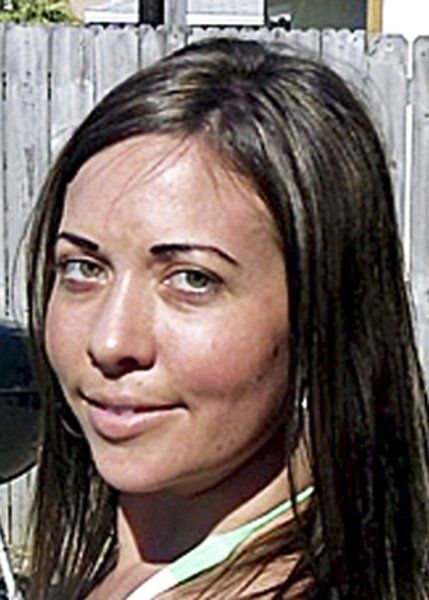Putting the past to rest
Published 11:49 pm Wednesday, May 13, 2009
Editor’s Note: This story contains graphic descriptions that may be disturbing to some readers.
VALDOSTA — Exhuming a stain on Valdosta’s past this Saturday may finally put murdered Mary Turner to rest.
In May 1918, Mary Turner protested the murder of her husband during a South Georgia “lynching rampage.” She was a 20-year-old black woman. She was eight months pregnant.
Her threats to swear out warrants “enraged locals. … Mary Turner fled for her life only to be caught and taken to a place called Folsom’s Bridge on the Brooks and Lowndes counties’ shared border.”
There, a mob tied her ankles. They hung her upside down from a tree. The crowd doused her with gasoline, burning away her clothes. Her baby was cut from her and killed. Mary Turner’s body was riddled with bullets.
Ten feet away, Mary Turner and her dead baby were buried in a grave marked with a whiskey bottle and a cigar.
And, for all intents and purposes, Mary Turner was forgotten. Her story wiped away from most area history in both the white and black communities.
This weekend, local folks are scheduled to gather at what is believed to be the site of Mary Turner and her baby’s murder.
The spot will be commemorated with a cross. The cross will eventually be replaced by a historical marker telling her story, which was only one of several acts of violence this month 81 years ago.
What is known of Mary Turner’s death is provided by the Mary Turner Project, a group of Valdosta State University students, faculty and community residents “committed to racial justice by educating ourselves and others about the presence of racism, effects of racism, and how to become involved in eliminating racism.”
Project members Mark George, a VSU sociology professor, and Tracy Woodard-Meyers, also a sociology professor and director of VSU’s Women’s and Gender Studies, met with The Valdosta Daily Times to discuss Mary Turner and this weekend’s ceremony.
“I don’t think these things go away until they are acknowledged,” George says, answering the question that many have posed. Why now? Why rehash a tragedy from 80 years ago, one in which all of the participants are likely dead?
It’s a question the Mary Turner Project often encounters. Included with the history of Mary Turner’s murder is an answer to the question, “Why Now, 2009?”
Part of the answer states, “We should bring them up to acknowledge the lives lost, along with the reality that no justice has ever occurred for the victims, families and many others affected by these events.”
George mentions a more recent incident to demonstrate the importance of understanding what happened to Mary Turner. He refers to a 2002 incident involving three local white teen-agers who reportedly painted a Barbie doll black and hung it in a mock lynching. The teens allegedly intended the incident as a practical joke, but it upset many in the black community.
Had young people known the very real horrors and history of the region’s lynchings and racial divides, perhaps such an incident could have been avoided, George says. The Mary Turner Project was created as a response to this ignorance.
George adds that the project is not intended to vilify Valdosta, Lowndes County or Brooks County. The South holds no exclusive rights to racism, he says. Racism has run the course of American history from North to South, and sea to shining sea.
Mary Turner’s story is part of our region’s chapter in America’s racial saga. And Mary Turner and her unborn child were only two of the souls lost that tragic time in a faraway May.
Christopher C. Meyers, Tracy Woodard-Meyers’ husband, wrote a history of these events titled “‘Killing Them by the Wholesale’: A Lynching Rampage in South Georgia.” Many years ago, the National Association for the Advancement of Colored People issued a report on the incident “The Work of a Mob.” Several months ago, syndicated columnist Leonard Pitts mentioned Valdosta in a column on racial horrors of the past; he was referring to these incidents.
The story begins with a white man named Hampton Smith who owned a Brooks County plantation. He reportedly had a reputation for abusing employees. He would bail people out of jail, and they would work for him to pay off the debt.
Smith bailed out Sydney Johnson, a 19-year-old black man “arrested for ‘rolling dice’ and fined $30.” Smith beat Johnson for not working. Johnson claimed to be sick. After the beating, Johnson shot and killed Hampton Smith.
“What ensued after the shooting was a mob-driven manhunt for Johnson and others thought to be involved in his decision to kill Hampton Smith,” according to the Mary Turner Project. “That manhunt lasted for more than a week and resulted in the deaths of at least 13 people, with some historical accounts suggesting a higher number of persons killed.”
Mary Turner was one of the people killed.
Following Mary Turner’s murder, Sydney Johnson died in a shoot-out with police on Valdosta’s South Troup Street. A crowd of 700 people bore witness to the castration of Johnson’s dead body. A rope was tied around his neck and he was dragged to Campground Church in Morven. “There, what remained of his body was burned.”
It is believed more than 500 people fled Lowndes and Brooks counties during this episode.
On Saturday, both black and white plan to meet at the site where Mary Turner died a gruesome death. At a site of violence, they plan to meet in peace and acknowledge the past.
The Mary Turner Project commemoration is scheduled for Saturday, 11:30 a.m.-1 p.m., luncheon at Hahira Recreation Center, with guest speakers; 1:30 p.m., travel to ceremony site, west of Hahira on Highway 122; 2 p.m., ceremony to lay a marker at the site of Mary Turner’s death.





